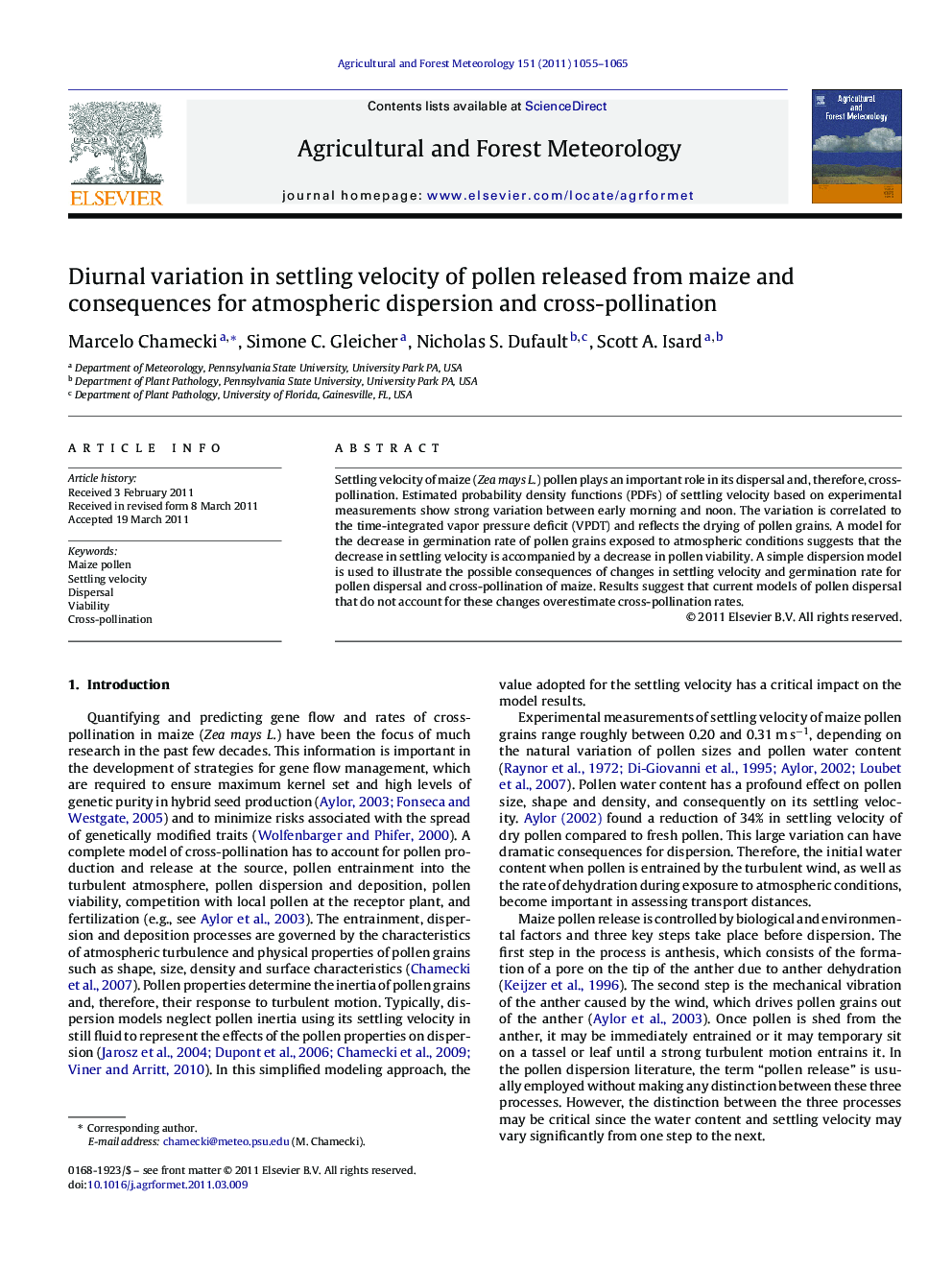| Article ID | Journal | Published Year | Pages | File Type |
|---|---|---|---|---|
| 82118 | Agricultural and Forest Meteorology | 2011 | 11 Pages |
Settling velocity of maize (Zea mays L.) pollen plays an important role in its dispersal and, therefore, cross-pollination. Estimated probability density functions (PDFs) of settling velocity based on experimental measurements show strong variation between early morning and noon. The variation is correlated to the time-integrated vapor pressure deficit (VPDT) and reflects the drying of pollen grains. A model for the decrease in germination rate of pollen grains exposed to atmospheric conditions suggests that the decrease in settling velocity is accompanied by a decrease in pollen viability. A simple dispersion model is used to illustrate the possible consequences of changes in settling velocity and germination rate for pollen dispersal and cross-pollination of maize. Results suggest that current models of pollen dispersal that do not account for these changes overestimate cross-pollination rates.
► Measurements show that settling velocity of maize pollen changes during the day. ► Changes are caused by drying of pollen grains and associated with atmospheric VPD. ► Simple models explore consequences for dispersion and cross-pollination. ► Results suggest that drier pollen is transported further but has decreased viability. ► Current models do not account for these processes and overestimate cross-pollination.
